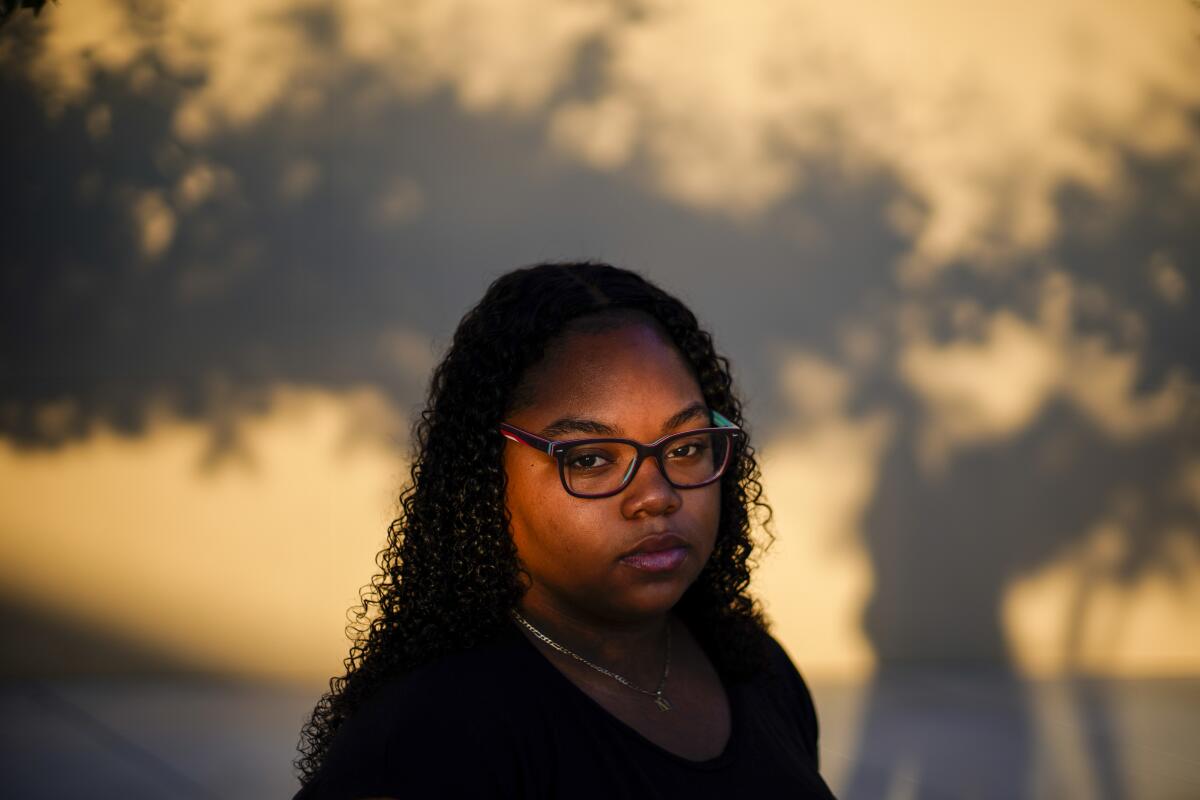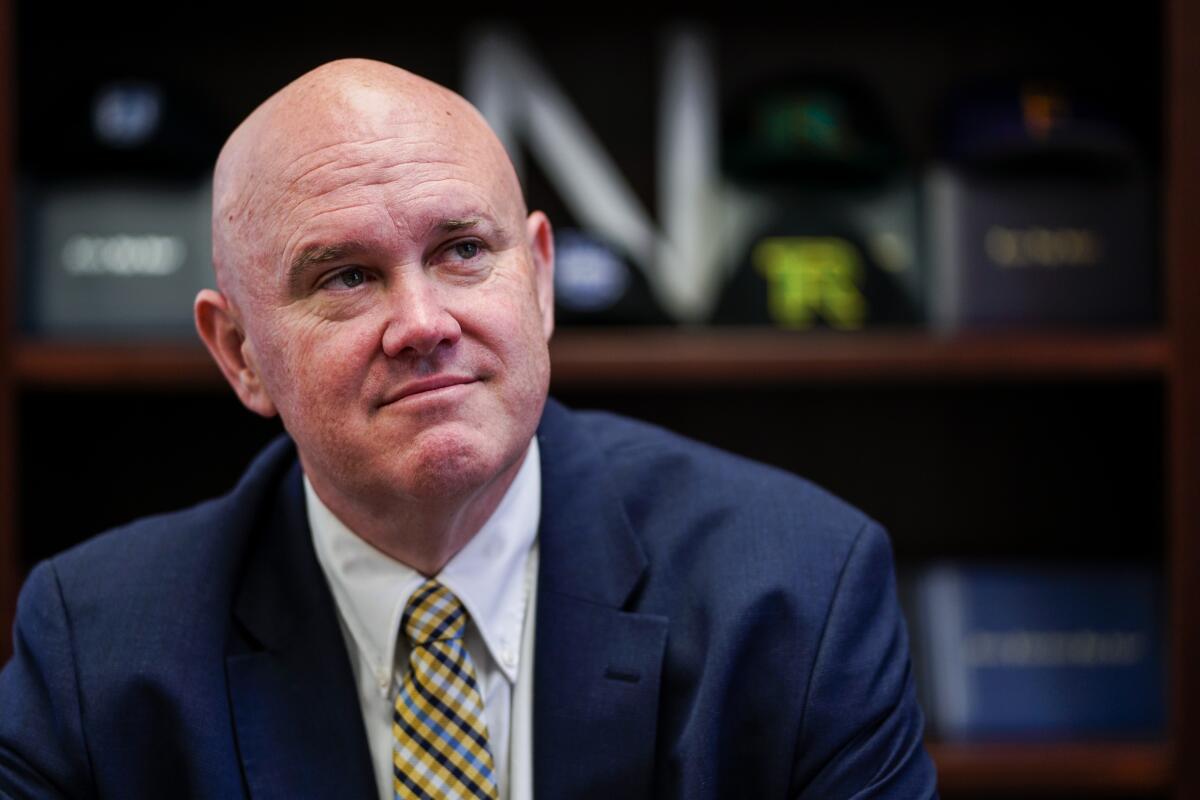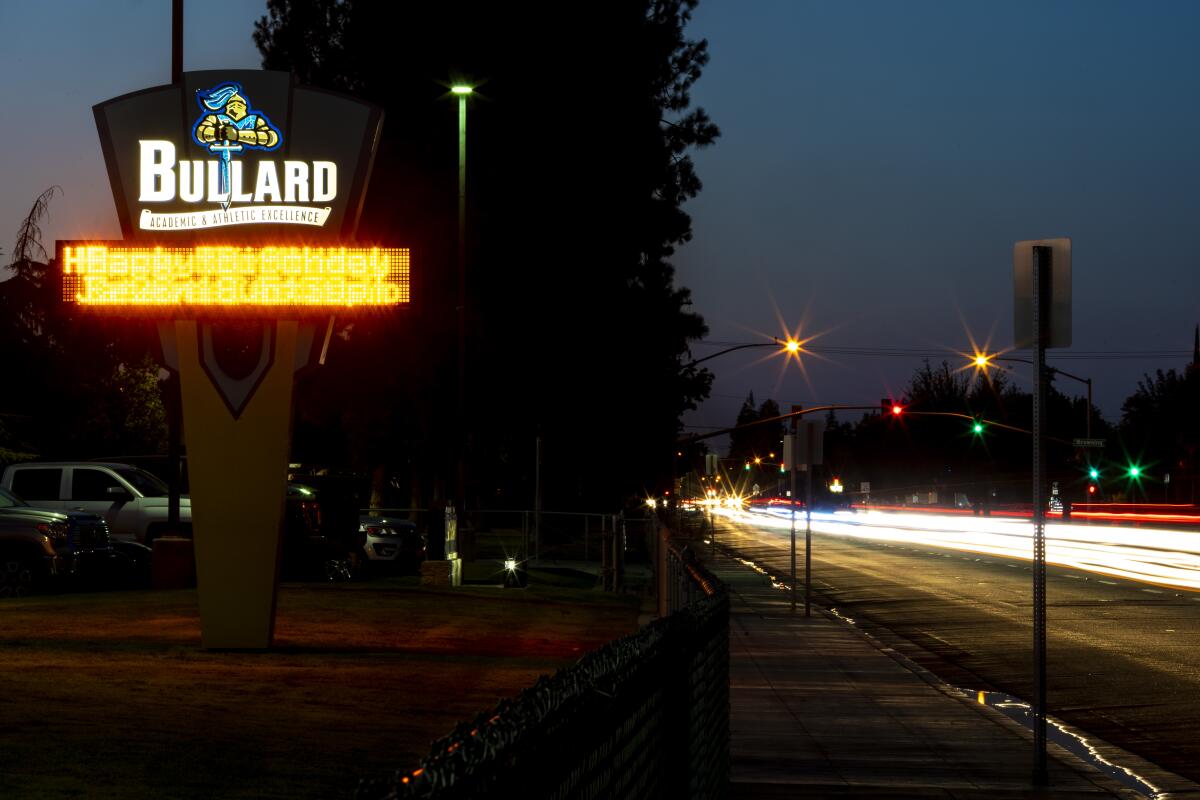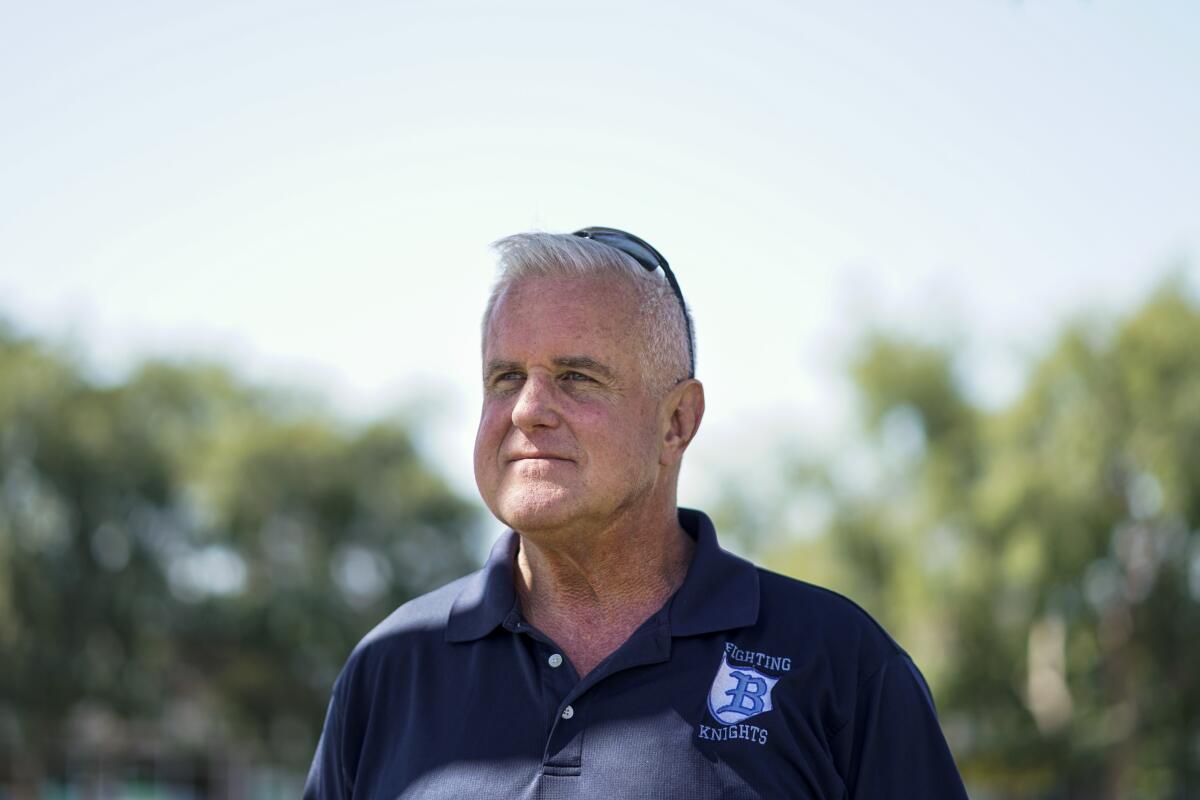Cheerleaderâs blackface video raises ghosts of Fresnoâs racist past

FRESNO â It took two 15-year-old cheerleaders, two viral videos, a racial slur and a school board member on a tear to force this Central Valley city to confront its painful past â one of discrimination that some say has shaped the place for more than a century.
This very big, very small town spent its summer vacation talking about racism and white privilege, about youthful mistakes and righteous punishment, about elusive justice and enduring pain.
With the school year now underway, the question is what happens next.
The white girl whose behavior is at the heart of Fresnoâs current racial debate remains on the cheer squad. The black girl who blew the whistle has been pulled out of school by her fearful mother. And the Bullard Knightsâ Friday football games â events that bring residents together â promise to be marked by protests and heightened security.
The incident that ignited the civic soul searching was âhorrifically racist and inappropriate,â Fresno Unified School District Superintendent Bob Nelson said in a recent interview. âIt is also a 15-year-old. That has been the crux of the issue. How do you respond to that?â
The turmoil began on a Thursday in late May, as Bullard High Schoolâs fall junior varsity cheerleader tryouts neared.
Two freshmen girls â one white, the other mixed race â were hanging out near campus and shot a short video. In it the white girl, her face painted black, waggled her head and declared: âWho said I canât say n - - - a?â Her friend posted it on Snapchat to a circle of classmates and fellow cheerleaders.
Not long after the video lit up phones around Bullard, word of a second one came to light. Recorded several weeks earlier on campus, it showed the same girl surrounded by friends. She is laughing and smiling. They egg her on to say the N-word. She resists briefly, then appears to happily comply.
At a news conference during the last week of school, Nelson called the videos and their aftermath âa very public and jarring issue of racial strife.â

Then he connected the dots between Fresno circa 2019 and the city of a century or so earlier.
âOur community has wrestled with issues of racism and racial tension for decades,â he said. âIf you track that history, our community actually began with redlining of various racial groups to restricted parts of the city. And, obviously, that painful legacy still haunts us.
The âtruth of the matter,â Nelson said, âis that systemic racism in our community is so universal that itâs almost become normalized.â
That legacy dates to the days when the Central Pacific Railroad was under construction. Fresno Station was completed in 1872, the same year the city was founded. Two years later, when Fresno became the county seat, one-third of its residents were Chinese.
In between those two civic markers, Fresnoâs white citizens voted ânot to sell, rent, or lease any land east of the railroad tracks to Chinese,â Ramon D. Chacon, a Santa Clara University professor, wrote in Southern California Quarterly. The railroad âagreed to cooperate with the white citizenry and sold to the Chinese only those lands west of the tracks.â
In the 1930s, the federal government started drawing color-coded maps that rated neighborhoods across the United States on their creditworthiness. Green neighborhoods where whites lived got mortgages. Red and yellow neighborhoods where blacks and Latinos lived didnât.
The practice created an economic wall between east and west, white and minority, affluent and poor Fresno. When Highway 99 was built in the 1950s, creating yet another barrier between haves and have-nots, segregation was cemented in.

The demographics of Bullard High, located in an affluent Fresno neighborhood near a tony outdoor shopping mall, have changed dramatically over the years.
In the 2018-19 school year, the student body was 53.3% Latino, 26.2% white, 10.4% black and 5.8% Asian, according to the California Department of Education. Twenty years earlier, white students were in the Bullard majority, at 61.1%, while Latinos made up 19.5%, with blacks at 9.9% and Asians 7.2%.
Aâmya Wilson, 15, had set her heart on Bullard and the cheer squad when she was in elementary school. She got her wish, but it didnât last long.
On that Thursday afternoon in late May, Aâmya was at school with other girls from the freshman squad, getting ready for a cheer clinic. Thatâs when the Snapchat story showed up on several of their phones. Some of the girls who received the video were white, others black. Everyone in the group saw it.
âI felt like, âHow could you do that?â â said Wilson, who is black. âWe were all shocked. We didnât get upset at first. We watched it one time and thought we heard it wrong. So we watched it a second time.â
When she got home, Aâmya said, she felt troubled and talked to her mother about what had happened. The next day, Aâmya reported the video to a vice principal, who she said was âvery hurt about it.â
âSheâs African American herself,â Aâmya said. âShe took our written statements. She said she hoped it would get handled in the right way. And then we just went back to class.â
Cheerleader tryouts were that Saturday, Aâmya said. The girl who painted her face black and the one who posted the video made the team. Aâmya did not.
The next week, she said, she was called into the office to talk about the incident with another vice principal. And then she started getting âall these random messagesâ from friends of the two girls involved.
âThey said I was wrong for reporting it, and I should have kept my mouth shut,â Aâmya said.
There was a meeting with Nelson. And then another with students who had seen or received the video and their parents. The superintendent said âthey were going to handle the issue, and they would make a policy about this, and the girls would get consequences,â Aâmya said. âBut he couldnât tell us the consequences.â
Then on May 31, community activist Stacy Williams posted the videos on her Facebook page. A local teacher had sent them her way. The post elicited hundreds of angry responses.
Nelson posted a lengthy message on his own Facebook page, writing that âour community is grappling with a jarring incident of racial insensitivity that in a matter of a few hours tonight, has spiraled. I am reaching out tonight to ask our community to join with me in rising above the ignorance, hatred and angry rhetoric that has evolved on social media.â
Days later, the superintendent convened the news conference. He said âappropriate disciplinary proceduresâ had been taken, but federal, state and local law prohibited him from outlining them. Aâmya spoke, and so did Williams and other community activists.
When the cheerleader who painted her face and her parents heard Nelson link the videos to Fresnoâs past, they were hurt and angry, they told The Times in their first public comments.
âPersonally, I did not think anyone at Bullard was a racist,â the girl said. âI thought, honestly, that we were all happy together. ... [Nelson] adopted this false narrative that Iâm a racist and this was an act of racism, after he knew all the parts of the story, that Iâm not a racist.
âYes, I messed up,â she continued. âYes, I made a mistake. But you donât have to define a person by their mistake. You donât have to define me as a racist because I made a mistake.â
The cheerleader and her parents would not discuss the details of what they prefer to call âconsequences,â rather than âpunishment.â
Neither the school district nor The Times is naming the girl or her family because she is a minor. But much of Fresno knows who she is. When Williams posted the videos on Facebook, she exhorted readers to help uncover the girlâs identity and then revealed her name.
The result, the girlâs father said, was that âthreats of rape, torture and death ensued on social media. ... We had law enforcement parking in front of our home every evening. ... Our minds raced from, âDo we have to move out of state? Do we change our name?ââ
The 15-year-old says that, over the course of three days, she had painted her face various colors as a joke, that she didnât know the significance of blackface, that the same friend who posted the video had given her permission to use the N-word, that to her it meant âfriends,â that the word could be heard all over campus.
The girlâs parents considered removing her from the cheer squad, but decided against it. She met with members of the school districtâs intervention and prevention team. The district employees urged her and her friend to begin meeting with groups at school in an effort at ârestorative justice.â The first meeting was with the JV cheer team.
âSo we taught what blackface meant, and how offensive it is and how wrong it is to do,â the girl said. âWe also taught them what weâve learned from this situation and told them that weâre sorry and weâre hoping to move forward from this and bring education and change.â
The meeting went well, she said. âThe JV girls forgave us.â
But, she said, the varsity cheer team did not show up for their meeting.

Thatâs when Terry Slatic, the school board member who represents Bullardâs district, got involved. His daughter Regan had been a Bullard cheerleader. On July 10, he texted Nelson that he was going to the high school to speak with the squad.
In a recording of the meeting â which has been reported in the media â Slatic tells the cheerleaders that the blackface matter âhas been adjudicated. Itâs been judged. Itâs been disciplined. Itâs been taken care of at the school. Itâs been taken care of at the district. Apparently, it hasnât been taken care of in this room.â
He tells them that if they or their parents talk about the incident, they will not go to cheer camp. If anyone talks about the incident at cheer camp, he says, she will be sidelined for the duration of camp. If it comes up a second time, âall of varsity will be sitting for the rest of camp.â
âLetâs go over it again,â he continues. âAnybody can leave the team right now. ... The games stop now. Pass this on to your parents.â
The school board called a special meeting a week later to address Slaticâs behavior. Tearful cheerleaders and angry parents demanded he resign. Fellow board members excoriated him.
On Aug. 7, the board voted unanimously to censure Slatic, demanding that he attend anger management classes and be escorted whenever he is on a campus. A varsity cheerleader has filed for a restraining order against him; a hearing is scheduled for October. An effort to recall him from the school board is in full swing.
To Slatic, the problem with Fresno Unified goes far beyond a 15-year-old in blackface saying the N-word. He believes that the school district is out of control and has failed in its duty to prepare students for life ahead, that âweâre giving diplomas to kids with a sixth-grade education after 12 years,â he said in an interview.
You can hear the N-word everywhere you go, he said. âIs it a problem nationwide? Absolutely.â he said âIs it a problem unique to Bullard or Fresno? Thatâs the silliest thing Iâve ever heard.â
Cheerleader Ashley Cummings doesnât buy it, and she told him so at the special school board meeting. The girl in blackface spouting the N-word âwas the wound,â said the 14-year-old African American girl. âAnd you put salt in the wound.â
More to Read
Sign up for Essential California
The most important California stories and recommendations in your inbox every morning.
You may occasionally receive promotional content from the Los Angeles Times.











